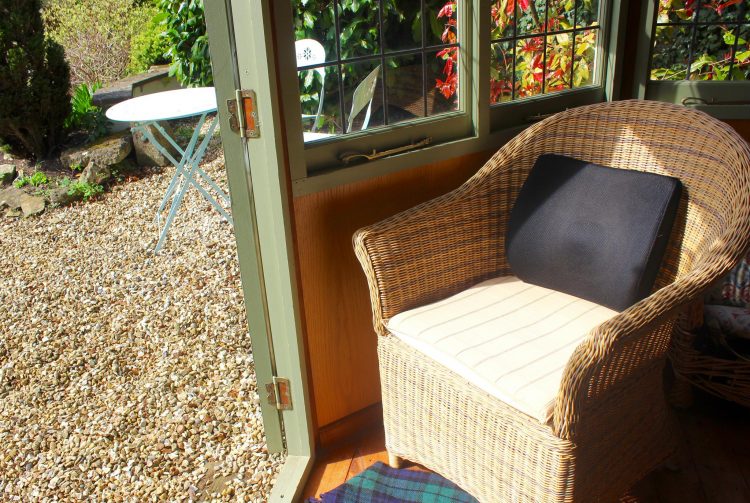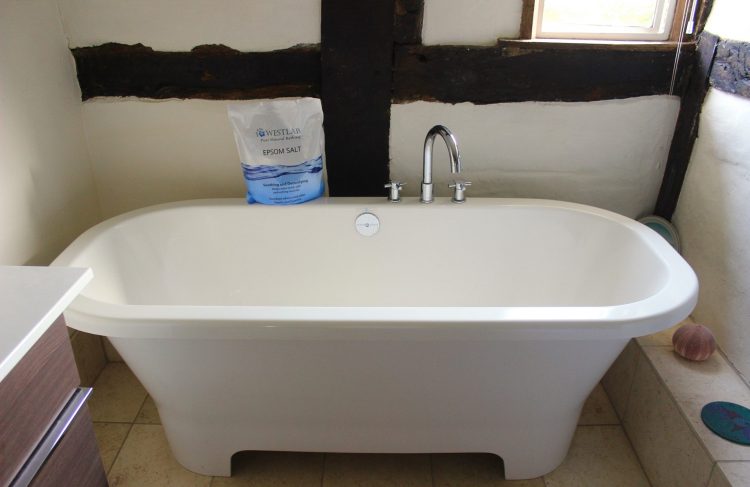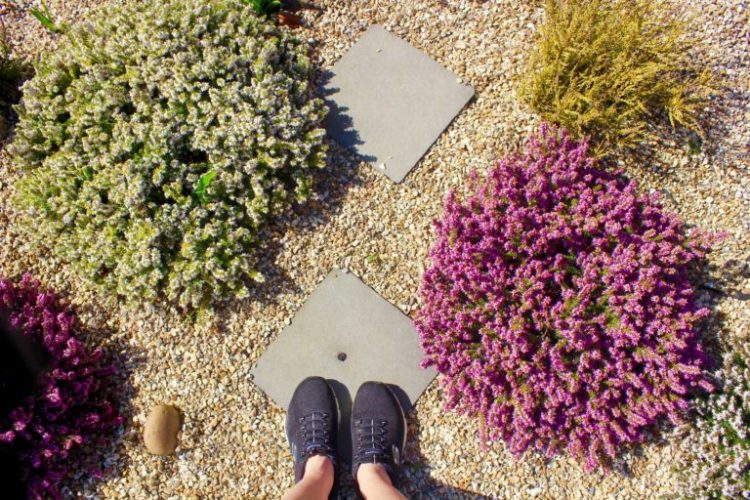14 Things That Helped Me Improve My Chronic Pain
I had a period of time not long ago when pain dominated every aspect of my life. I had days when I could barely walk. To go from sitting to standing I had to have help and support otherwise I couldn’t get up. My family always had to be around to help me and make sure I was safe. But one year on and I still have flare-ups if ever I overdo it or have a bad night’s sleep, but it’s nothing in comparison to the pain I used to have.
It’s been a long battle, and one that requires a lot of discipline and courage even now, but it’s completely worth it. Although your pain may seem like an impossible battle right now, don’t lose hope. Take it one step at a time. Progress can be slow but just remember, you might be able to look back to this day a year from now and see just how far you’ve come, and be able to thank yourself for not giving up.
When you are in a lot of pain, it can have a severe impact on your quality of life. You might struggle to think of anything other than your pain and find it hard to enjoy day to day life. Managing your pain is something you probably dream of – you might not even be able to remember a time when you weren’t in pain! When it comes to managing pain, apart from drugs, there isn’t much advice out there as to what else you can do.
As someone who has chronic pain, I discovered some very simple but effective ways to help reduce my pain. Each person’s pain is different and individual to them, so what might work for you might not work for others – remember, it’s all trial and error. Where the majority of your pain is and what’s causing it will influence which things might help you. If your pain is variable, this may mean something that helps your pain one day might not be as effective another day, so keep returning to this page and try different things. All these tips are things you can start doing right now, but like taking your medication every day, doing these things regularly helps them work. Here are some tips on ways to manage your pain:
1. Compression socks – If you have poor circulation, spend a lot of time lying down, or have pain in your lower legs, I found that compression socks are worth investing in. Compression socks encourage blood flow to and from the legs and feet, which improves your circulation, and helps prevent conditions like blood pooling, swelling and venous conditions. They can also help soothe tired, aching and fatigued legs and make standing for long periods more comfortable (especially useful after the shower).
2. Stretches – When you stretch, you increase the blood flow to areas that have become stagnant (cease to flow or move), which can help alleviate pain. It can also increase your range of movement and oxygen flow, which helps the body to heal. It can not only help reduce your pain, it is also great for reducing stress levels and to helping you relax more. If you’re very tired and fatigued, only do stretches that you feel comfortable with. These might be stretches on the floor with your back supported with a pillow against the wall/sofa. You can get some stretching exercises from your physiotherapist or health professional. If this isn’t suitable or available to you, I recommend Elle Fit — these guides have a full variety of stretches from head to toe and you can pick and choose stretches to suit you.
3. Walking – If you have back pain, circulation problems, or stiff muscles and joints, walking can be very beneficial. It can increase strength and flexibility, reduce joint pain, and enhance your quality of life. Many people think exercise will aggravate your joint pain and stiffness, but that’s not necessarily the case. It can help keep your muscles and surrounding tissue strong which is crucial to maintaining support for your bones. If you have fatigue, make sure you only do what your energy levels allow – do you not overdo it. If you’re too tired to walk, I recommend trying to just focus on doing some gentle stretches instead.
4. Posture – If you have back pain, it’s important to make sure your posture is right. To help you, you might want to consider investing in a lower back support cushion, as this will help support your lower back and can help prevent further back pain. You can take the cushion everywhere with you – home, work, appointments, theater trips, car journeys or even on the airplane! There are lots of support cushions out there so find the best one for you, an example of the one I use is the Medipaq.

5. Hot water – If you’re someone who has stiff muscles in the morning, having a long hot shower can be a great way to help your muscles relax and loosen up. The heat from the hot water helps promote better blood flow and circulation.
6. Heat Pad – Another effective form of heat is through a heat pad. I love these transportable heat pads! You can use it on areas that are especially painful, such as your back, neck, shoulders and abdomen.
7. Epsom salt – Epsom salts are not actually salts but a naturally occurring pure mineral compound of magnesium and sulphate. Having an Epsom salt bath can ease pain and relieve inflammation, making it beneficial for the treatment of sore muscles and migraine headaches. The absorption of the magnesium also helps to produce serotonin, which creates a feeling of calm and relaxation. However, my advice is to make sure if you’re having a bath you have enough energy for it, because baths can be very exhausting if you have chronic fatigue and you need to make sure you can safely get out of the bath afterwards.

8. Pacing – When you overdo it, even by the tiniest amount, your pain levels can shoot up. When this happens, it’s tempting to say, “I’ve over done it now so I may as well keep going,” but don’t! You can still save your pain and fatigue levels from going down even further. As soon as you feel the “over-doing” signs, I recommend immediately sitting down, putting your feet up and resting. Even if you’re in the middle of a task, remember you can finish it later — the severe pain and fatigue you will face tomorrow may not make it worth it. Pacing take a lot of discipline, but it’s vital to help keep the pain levels manageable.
9. Massage oils and massaging – Doing some very gentle massaging can help ease the pain and promote relaxation. You can massage yourself or get someone very close to you to do it, so if it does hurt you feel comfortable enough to tell them to stop. Just be very careful that it’s gentle and doesn’t then cause you further pain.
10. Meditation – Increasingly, psychologists are using meditation to help their patients cope with pain. Pain is only a sensation, albeit, a very unpleasant one. Meditation exercises can help to change your perception of that sensation and help reduce the pain.
11. Mindfulness – You may be surprised, but mindfulness can be very effective for pain relief. Many people try to push the pain out of their minds and try to avoid thinking about the pain, but this only makes it worse! When we try not to think about something we sometimes end up thinking about it more. For example, if you’re lying on the sofa focusing all your thoughts on your pain and how bad it is, you then might fall into a downward spiral of negative thoughts such as “my pain is so bad,” “what if it never goes away,” “what if I’m in pain forever.” These kinds of thoughts are unhelpful and only make your pain and situation worse.
So instead of thinking “my pain is so bad,” recognize these as thoughts of pain and instead think “I’m having feelings of pain.” By accepting and acknowledging your thoughts of pain, it can allow you to then move on and direct your attention back to the present moment. By mindfully accepting these thoughts it does not mean your pain will be any less, but I believe it allows you to spend more time and energy on living everyday life in the present rather than ruminating about your pain all day, which will help improve the quality of your life.

12. Hydrotherapy – Doing hydrotherapy with a physiotherapist can work wonders! It can be amazing for your pain and is a lot gentler on the body doing exercise in water than on land. However, hydrotherapy is only something you can do if your fatigue is at a good level, so make sure you are well enough to do this otherwise it can be very damaging to conditions like myalgic encephalomyelitis
13. Sleep – Sleep is such an important aspect of managing pain, and many of you who do have pain probably struggle to sleep, as the two come hand-in-hand. It can become a vicious cycle — you can’t sleep so your pain becomes worse, then because your pain is worse it’s harder to sleep… Getting a good night sleep is so important for your mood and health.
14. Look after yourself – When you’re tired, hungry, sick or in pain, you’re more susceptible to strong negative thoughts and emotions. So, make sure you take care of your diet, eat nutritious meals, get enough sleep, and give yourself extra love and attention for those really bad and difficult days.

Learning to manage your pain is a big learning curve, but over time things can improve. Don’t give up hope!
This blog was originally published on Mindfully Evie.
We want to hear your story. Become a Mighty contributor here.

